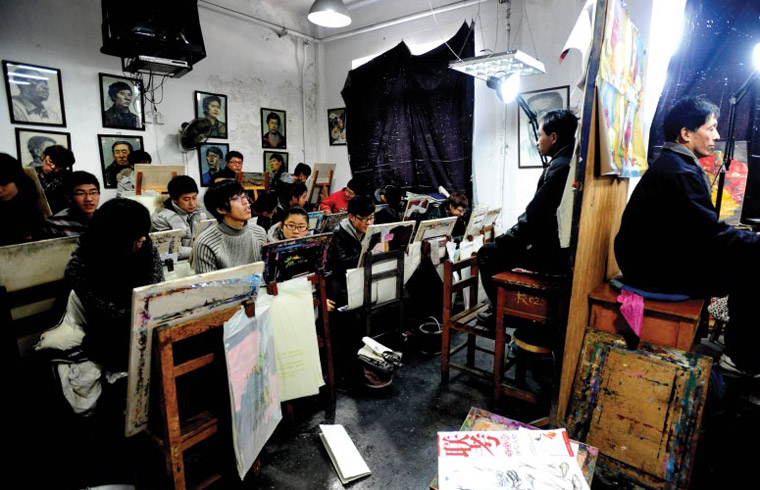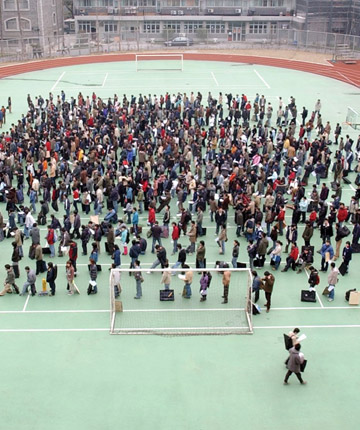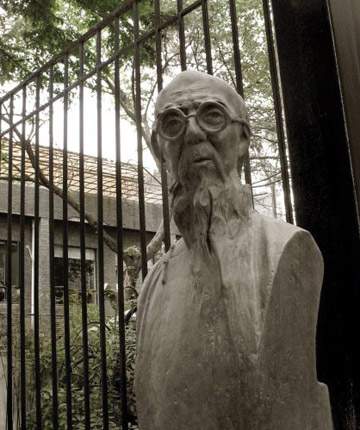ACADEMIES AS MONSTERS?
| February 11, 2011 | Post In LEAP 7

In recent years, criticism of Chinese universities from scholars in a variety of fields has grown. The main focus of this criticism is the distribution of power in university administrations. Although Chinese art schools are distinct from other universities in many ways, this tide of criticism has exposed a variety of unsavory practices at art schools as well. And yet revelations of these practices have been overshadowed by the continuous expansion of campuses, the establishment of new majors, and increased enrollments.
If universities are repositories of knowledge and creativity, then art schools have already functionally deteriorated into repositories of selective memory. Rather than representing the reality of contemporary art, they canonize based on their own partial criteria. Compared to the 1980s, our schools are no longer an important player in the creation of new art; now, they lack both standards and a stable grounding in reality. They produce value judgments closely linked to their own sense of authority, and focus on their own selections, but do not reflect on the origins of their values or their relationship with society.

This academic system has failed to fully incorporate the artistic and creative ideas of the past thirty years. The results of three decades of artistic endeavor are only ornaments in the schools’ hastily conceived curricula. Responsibility for the transmission of artistic concepts has become the purview of individuals making irrational, exclusive decisions. Some important contemporary artists have been engaged in various forms by the academic world, but in the absence of comprehensive academic curricula, they are ultimately reduced to the reproduction of established forms and themes. Thus, they constitute the “study of success” trend in academia, without offering a methodological and inclusive approach to culture.
Although these schools are spiritually rigid and atrophic, they are vigorously expanding in scale. The trend of expanding admissions spread to art schools beginning in the 1990s as institutes sought new sources of revenue. This tide of expansion was not accompanied by any genuine democratic or educational reform at these institutes. Its only function has been to hasten the proliferation of cram schools aimed at aspirants hoping to pass the academies’ still rigorous entrance examinations. Now numbering in the thousands, these concentration camp-like training centers allow students without high school diplomas who seek to become “successful artists” to adopt the rigid tastes of the academy two or three years ahead of their peers. Rather than fueling creativity by exposing these students to fresh artistic sensibilities, these classes provide three-hour sessions on sketching, color, and creating according to pre-interpreted school standards. From the perspective of these makeshift schools, students can only form their own perspectives by mastering these skills; whereas from the standpoint of real art, once these templates have been drilled into their heads, perspectives are no longer important. Notably, these schools are frequently staffed by recent graduates of the academies at whose gates they are typically located.
The trend of expansion has also raised questions about the pedagogical direction of art schools. We excessively focus on cultivating “useful” talents, often forgetting that “useless” talents also have significance in society. A democratic society requires democratized education, but this does not give universities the authority to use technique to blot out thinking. The emphasis on technique at the expense of thinking has allowed enrollment to increase tenfold over the past thirty years, but the increase in instructors has been limited by the exclusivity and conservatism of the academic system. The art system has become more and more open, and excellent artists have more opportunities than ever outside of academia. Even artists within the university system derive their value from their status as artists, not instructors. Consequently, the education offered by these institutes comprises only verbal instruction; the hands-on, personal mentor component has faded. This component requires personal friendship, which is no longer available on campus.

Indeed, teaching by example is becoming more and more rare. In order to alleviate the contradiction between the growth in enrollment and the sealing off of the educational realm, our art schools have often joined the new “college towns” formed by campus relocations on the edges of major cities, as in Guangzhou and Chongqing. As campuses have ballooned in size, they have also moved further and further away from teachers. This geographical phenomenon means that students’ activities, spaces and perceptive powers are as constrained as their thinking. Their worlds are limited to grassy suburban scenery and to three-hour sessions of painting human models in their studio classes. They are connected to the real world only by the internet, from which they obtain no real experiences, only emoticons and LOLs.
Further obfuscating the matter are all the “new” and “experimental” majors recently established to advertise how art schools are ostensibly keeping up with the times. But these new and experimental courses mostly produce fodder for the “creative industries.” These majors provide educations in the use of various hardware and software, which students study in the way one memorizes characters and learns brush strokes; this is not the way to engender true creative inspiration. Rather, these majors only serve to further shape students into cogs in a business machine that understands exactly how visual talent can be made useful.
At the end of the first decade of the twenty-first century, we must ask ourselves: Are our art schools becoming monsters? With huge structures, advanced facilities, and strong self-sustaining methods, there’s no new aspect of the outside world that these institutions can’t devour. But inside of their cages, there is no thinking and no spirit to be found.

